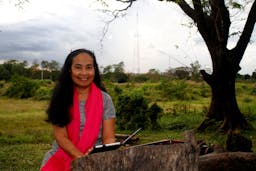"After breakfast, we run to catch our lunch": Women, climate change and post-disaster food security
May 28, 2019
Story
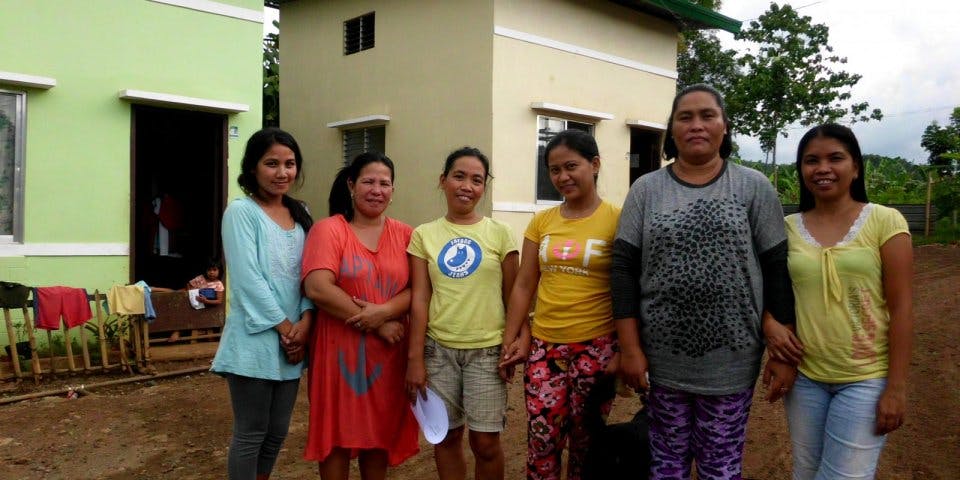
Women block leaders at St. Augustine Village in Cagayan de Oro City, Philippines pose before their new homes after extended stays in tent cities after they lost their homes during Typhoon Sendong (Washi). Photo by libudsuroy. CreativeCommons.
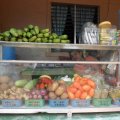
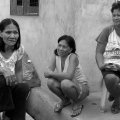
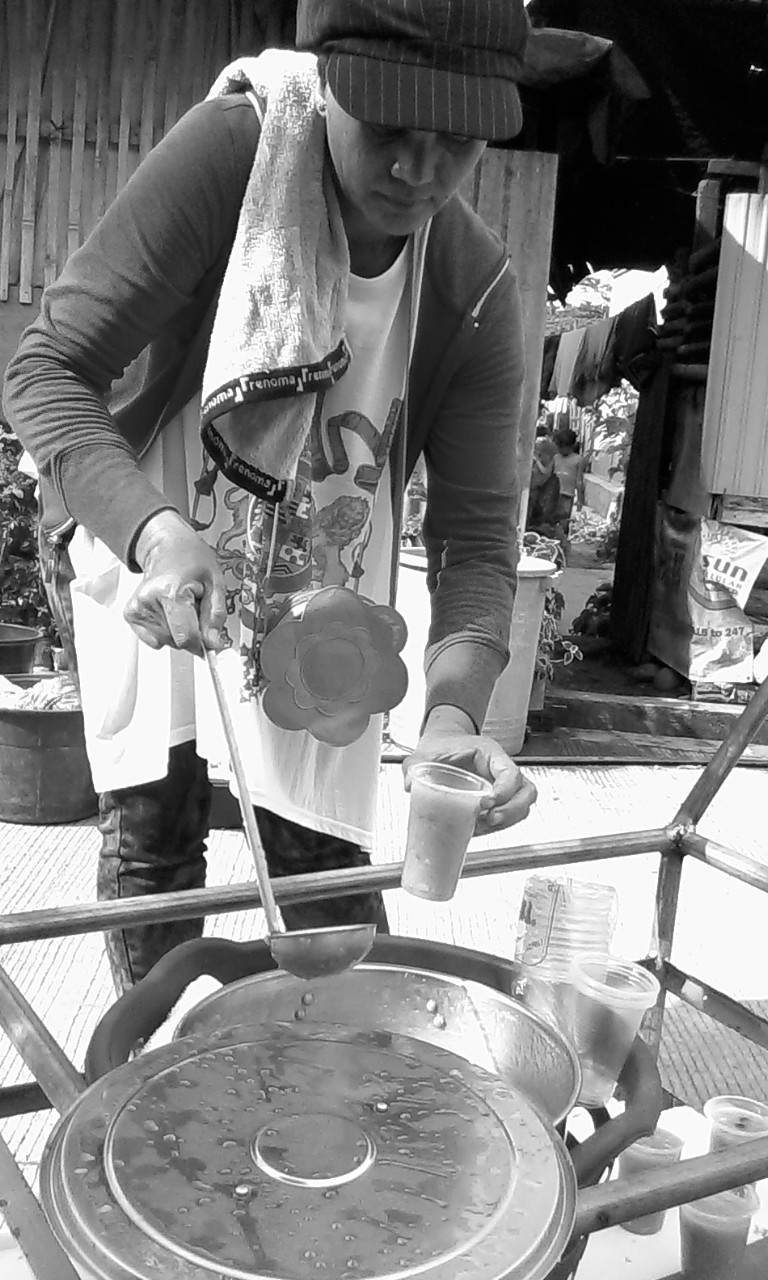




"After breakfast, we run to catch our lunch; after lunch, we try to catch our supper. Sometimes we forego breakfast or supper. We eat only once,”said a woman survivor of Typhoon Sendong, describing in stark terms the perilous ways she feeds her family, as if time had wound back to the primitive era of hunting for food in the wilds.
She was among the 10 women who joined a discussion at the Fil-Chinese resettlement village here in Cagayan de Oro.
Last year, I organized three discussion groups such as this one, of women leaders among disaster survivors, as part of a study on women’s roles and perceptions on food security and climate justice, which was commissioned by the Asian thinktank,Focus on Global South.
According to Clarissa Villasin-Militante, Philippine coordinator at Focus-Manila, the study will be consolidated with two other parallel studies held in the Bondoc Peninsula in Luzon island where farmers suffer from the human-made twin disasters of agrarian unrest and insurgency and in Iloilo in the Visayas, where typhoon Yolanda struck in 2013.
It was necessary then for me to listen closely to women-on-the-ground: how they were responding to food-security challenges they encountered as they re-established homes and engaged in (re)building communities after experiencing disaster, displacement and homelessness. From their experiences, lessons can be gleaned on how government and non-government organizations can strengthen support for them as well as for those who shared the same plight after two extreme weather phenomenon in the subsequent two years in the Philippines. Along the way, I also discovered how resourceful and enterprising women can be, and how these traits are helping them cope with the challenges of recovering from disaster.
Linking with these women’s groups and appreciating their support networks have reinforced what has been asserted by women advocates at the recent UN World Conference on Disaster Risk and Reduction in March this year: that women do play a huge role in advancing the resilience and reconstruction of communities after a disaster.
SEVERE STORMS
Since 2011, at least one severe typhoon had struck portions of the Philippine islands yearly, with each severe storm leaving in its wake a devastating impact on people’s lives and property.
In December 17, 2011, Typhoon Sendong (international code Washi), became the first strong typhoon to hit Northern Mindanao in decades. Then, in 2012, Typhoon Pablo (Bopha) hit Eastern Mindanao and in 2013, Typhoon Yolanda (Haiyan) hit the Visayas.
The United Nation’s Inter-Governmental Panel on Climate Change had repeatedly warned that as a result of global warming, extreme weather such as long intense droughts and severe storms will take place more frequently, creating widespread disasters among the most world’s most vulnerable populations in the Third World. Indeed, in the aftermath of Typhoon Sendong and its flashfloods, about 70,314 families (228,576 persons) were affected.
Of these, 38,071 families (228,576 persons), or around 54 percent were residents of Cagayan de Oro City.(1) About 13, 321 families/65,046 persons, who were survivors of the calamity in Cagayan de Oro city, were rendered homeless and lived in evacuation centers and transition shelters for months and, in some cases, for more than a year.
Most of the internally displaced persons (IDPs) were landless informal settlers who had built their residences of wood and other light materials along the flood-prone banks and deltas of the Cagayan de Oro River, areas that were earlier identified as risky no-build zones by the government’s environmental agencies. Most of these settlers were migrants drawn by convenient livelihood as cheap providers of services and petty trade in and near markets, ports, inland transport terminals, small-scale trading centers, hotels, and government offices.
Within six months after the disaster, already four resettlement sites were completed out of proposed 20 sites, and by the first quarter of 2014, almost 7,000 homeless families who were earlier housed in temporary tent cities were relocated in new homes in areas deemed safer but situated far away from the urban centers.
In a comprehensive post-Sendong disaster needs assessment report released in June 2012, the gender, social protection and livelihood sector had identified a recovery framework which would guide local government units and civil society providing support for the IDPs on their journey to recovery. It was expected that after the disaster, recovery will be ensured if the recovery framework were to be implemented seriously and its strategies embraced by the IDPs as their own.
LISTENING TO WOMEN’S INSIGHTS ON FOOD PRODUCTION
I listened to women residents talk among themselves about food security’s various aspects in the following villages: St. Augustine Tabang Oro Village in Barangay Lumbia; Xavier Ecoville in Barangay Lumbia; Fil-Chinese Village in Barangay Canitoan; Gawad Kalinga/SM-BDO Village in Barangay Calaanan; Indahag Phase 1 in Barangay Indahag, and Indahag Phase 2 in Barangay Indahag.
According to the United Nations, food security exists when all people, at all times, have physical and economic access to sufficient, safe and nutritious food to meet their dietary needs and food preferences for an active and healthy life. Much had been written to point out how in rural areas climate change impacts on rural women’s food production, and thus, to the food security. The hunger risk arises from fluctuations in production since most of what they eat are harvested from the land and little is bought elsewhere. But for grassroots women in peri-urban settings who are mostly food net buyers, the risk to food security is due to fluctuations in income.
• In the case of the women in resettlement areas in Cagayan de Oro, only two of the informants were engaged in agricultural production, part-time and seasonally cultivating a relative’s small farm holdings in a nearby town. As most of them were poor landless migrants, they do not produce their own food but are largely only food consumers.
• This is rather ironic because most resettlement sites are situated in peri-urban settings at the city’s outskirts, surrounded by productive agricultural areas where rice or corn, fruit trees like mangoes, bananas and lanzones and cash crops like cashew and abaca, are grown.
• There are restrictions to using areas for livestock production and informants recall having signed agreements not to raise livestock or chickens within the residential quarters. The restrictions are obviously due to considerations of sanitation and health. The allocated house size ranges from 26-30 square meters, and it would be impossible to raise livestock inside such cramped, ‘shoebox’ spaces among row houses.
But an informant said she defied the restrictions and raised two pigs inside her house but it was hard work to keep clean the pens and dispose of the pig’s offal daily. But she was able to raise enough money by selling the pigs after three months and used most of the money to pay for the tuition of a child in college.
She recalled, “I secretly raised pigs. I know it was against the rules. I was ready to face the consequences. I thought it was a better way to source for my daughter’s tuition. Why, would they want me rather to steal money somewhere?”
• Another woman shared her experience of raising pigs and goats but she had built pens in a vacant lot, just outside the resettlement perimeter.
• The women are hoping that the government will eventually allow them to utilize under-used areas like abandoned houses in the resettlement site as spaces for livestock that can supplement their food consumption and increase their income.
• As they left the evacuation centers to resettle in their new homes, each household were provided seed packets by non-government organizations but most of the seeds, according to the women, could not be used for lack of space. Those who had sown the seeds of vegetables like petchay, cucumber, tomatoes,kangkong, bitter melon and eggplants, were able to harvest some though they noticed the growth was stunted due to the lack of water supply in the areas. The produce from these frontyard gardens supplemented their diets for a time.
• In four of the resettlement sites, however, collective gardens of lemongrass, moringa and yams were made available. The women were growing gardens in their own yards, use recycled tetrapacks which are sewn together as pots or containers since these were plentiful at the evacuation centers. Some of the extra vegetables were sold at church yards sales and markets, thus providing additional incomes.
INSIGHTS ON FOOD ACCESS
● Most of the households continue to procure their food staples from the public markets, where they had always bought food stocks before Typhoon Sendong struck. But distance between home and market is a major challenge now. They used to live at the city center, adjacent to markets but now they are staying in villages which are located at least 10 to 20 kilometers away from the nearest public market. The cheapest cost of public transportation is already enough to pay for a meal to feed a family of five.
Alternative sources of food include the neighborhoodsari-sari (neighborhood variety)store,talipapa(sidestreet mini-markets), church-based groups and non-government organizations (NGOs), borrowing from neighbors and relatives and market pooling,among others. The distance from the urban center have made it difficult to earn from petty trade or other vocational skills. This has not been factored in when they trained on income-generating trades.
• “Napurga mi sa training(We were over-trained) at the evacuation centers. I know how to curl hair, pedicure and manicure, cook siomai and siopao, make rugs and peanut butter,”said a woman from Xavier Ecoville. She thought the trainings have increased her options for income generation. “But I could not ply any of these trades because for one, I do not have capital. And I do not want to latch on to the high interest rates of loan sharks. Two, I cannot have paying customers here, no one here can afford to pay for my services. I am supposed to offer my nail cleaning services among employees in government offices in the city. So in my spare time I just paint the nails of my children and neighbors and relatives but for free.’’
Another woman, aged 65, was planning to go back to her lean-to under a bridge so that she can sell cigarettes on the streets. She worried, however, that the soldiers now guarding the bridge might not allow her to return. And she is not alone in thinking of going back to the risky no-build zones.
• The women think that fresh capital for their home-based endeavors and vending will help them tide over and reduce hunger risk for their families. For now, capital in the form of loans/credit is only available from motorcycle-ridingpautang(lending) firms that charges very high interest rates of 15-20 per month. They wonder if NGOs or government can offer start-up grants given gratis and without obligations for payments, and hope it will be available to women, not only to men. They said they have heard of such grants assistance for Sendong victims and survivors but they have not received such amount, which they said has been announced in the local papers.
• They shun grameen banking as previous experiences with collective loan systems did not work out well for them so they would rather take responsibility for personal loans.
• Most of them consider themselves unemployed but they keep their households afloat by engaging in various home-based and small-scale or petty trade, or providing labor services as laundrywomen, part-time nannies, cleaning women, to middle-class residences in nearby subdivisions. Some of them also sell snacks and cooked food in the neighborhood.
In two villages, most of the women (11 out of 15) said that they no longer hold the purse nor do they buy the food they serve daily. Their husbands who work in construction sites come home only on weekends, not with their wages but with rice and various canned goods consisting of the next week’s food ration.
The wives say they do not feel they have lost much as they ceded responsibility in making decisions about what food to buy, how much, when and where to buy, and even pass on the marketing task itself to their husbands. In fact, they say they feel relieved of the responsibility of making both ends meet with very little cash on hand.
“So my task is focused on preparing the food every day,” said one. This buys them a few more hours to attend to the needs of their children or their elderly parents, or to engage in homecrafts like rugmaking or sewing totebags.
This pattern of decision-making departs from data from a survey done among almost the same communities in 1996-97 that showed that food procurement, access and consumption were the territorial tasks of wives.
